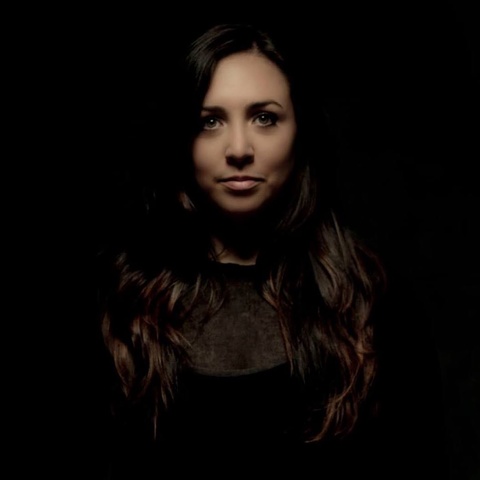Director/Choreographer: Angelica DeLashmette Hurst, in research and collaboration with the dedicated and talented Figures of Speech cast
Sound Design: Ramin Roshandel
Music: Original cello score by Sarah Hansen
Ionia by Ben Frost
White Man by Masego
Costume Designer: Angelica DeLashmette Hurst, in consultation with Juliana Waechter
Lighting Designer: Jeff Crone and Dante Benjegerdes
Dancers: Sarah Skilling, Margaret Steimel, Talia Howard
Stage Manager: Mariana Tejeda
Assistant Stage Manager: Hallie Patterson
Sound Board Operator: Brady Willis
Crew: Richard Stockton, Erin Evans, Grace Andersen, Ashley McKim, Veronica Patterson, Morgan Powers
A sincere thank you to Alyssa Alber for her contribution to this process.
[Interrupted] Speech is a re-staging of the original thesis work, Figures of Speech. Changes and adaptations in response to COVID-19 limitations. Figures of Speech emerged from a curiosity about dialogue and the moving body, inspired by connections between Western Post-Modern and Contemporary dance improvisation practices and Afro-Diasporic dance practices that are centered in the "social" moving body. The concept of a “social” body in the context of this research encompassed practicing and crafting movement through a lens of dialogue – communication, cultural exchange, discourse – and using this lens to develop relational approaches to creative process, choreographic design, and performance. The research in the studio investigated what it means to be both a speaker and a listener, how to attend to one’s relationship to other bodies in space, and how to develop “relational intelligence” through the body as we engage in real-time, compositional dialogue. Figures of Speech is an interplay of spontaneous and structured materials, examining how performers can build and share in the cooperation of empowered choice-making – making individual choices while also engaging in ensemble thinking to determine outcomes throughout the performance. The research interrogates choreographic structures and explores how embodying practices and sensibilities of receptivity and reciprocity can map and shape the architecture of a live performance work.
I would like to sincerely acknowledge and express gratitude to each of my dedicated cast members who have been with me in this research for three consecutive semesters. Thank you for being open, for taking risks, for making this research possible, and for your commitment to the project. My thesis research and work would not have been possible without each of you. I would like to acknowledge the support and guidance of my Thesis Committee: Christopher-Rasheem McMillan, Jennifer Kayle, and Rebekah Kowal. In particular, I would like to acknowledge the support and mentorship I received from Jennifer Kayle as my thesis chair; your extensive investment in my research and my success means a lot to me and greatly shepherded my growth in the process. I would like to acknowledge and thank the University of Iowa Dance Department faculty and production team for supporting me during the COVID-19 pandemic limitations; thank you for the platform I was provided with to take two creative works to full production. I would like to acknowledge and thank dance artist Lindsay Forsythe for traveling from Minneapolis to Iowa City to work with me and my cast in the Spring of 2020. I would like to acknowledge the work and research of Contact Improvisation pioneer Nita Little. I would like to thank Moncell E. Durden for sharing your research and knowledge of Hip Hop, Black Culture, and Black vernacular dance so generously with me and your students worldwide. I would like to also acknowledge and thank the pioneers and leaders of Hip Hop Culture and its social dance forms. I am deeply thankful for all of the opportunities I have had to cross paths and learn from you. Thank you for sharing your joy, heritage, and culture with me so generously. I would like to thank my family, chosen family, and friends for cheering me on and for your support during my time in graduate school. Most importantly, I would like to thank my husband and eternal partner, Andrew Hurst, for your love and for supporting me from day one of my journey at the University of Iowa.

Angelica DeLashmette Hurst is a seasoned educator, choreographer, performing artist, director, producer, and community facilitator. She is a hybrid dance artist who is passionate and inspired by Hip-Hop/Street Dance forms and Modern/Contemporary dance forms. She is a practitioner inside of Hip-Hop Culture and aims to bring awareness, education, respect, and appreciation for Black vernacular dance through her teaching practices and pedagogical research. Her further research is located in Western and Afro-Diasporic dance and improvisational practices that are centered in the social moving body – examining how a responsive body is activated in practice and performance. Her work interrogates choreographic structures, cooperative group processes, and she is interested in relational approaches for choreographic development. Her expertise additionally lies in Somatic movement and body reeducation methodologies: Bartenieff Fundamentals and Laban Movement Analysis, dance medicine and injury prevention, kinesiology, and functional anatomy. DeLashmette Hurst is a Certified Laban/Bartenieff Movement Analyst (CLMA) and a Registered Somatic Movement Educator (RSME) since January 2018. DeLashmette Hurst sees dance as a powerful art form that cultivates cooperative creativity and constantly reinforces the significance of meaning-making through the moving, expressive body. It is in her capacity to connect, collaborate and build community with others that dance has had its most profound influence in her life. She is passionate about creating spaces for creative action and loves teaching, mentoring, and working with students and sharing her research in and love for dance. She is graduating with her MFA in Dance from the University of Iowa in December 2020, and is thankful for the extraordinary growth she has had the privilege of journeying through and for the guidance she received under the exceptional faculty in the Department of Dance.